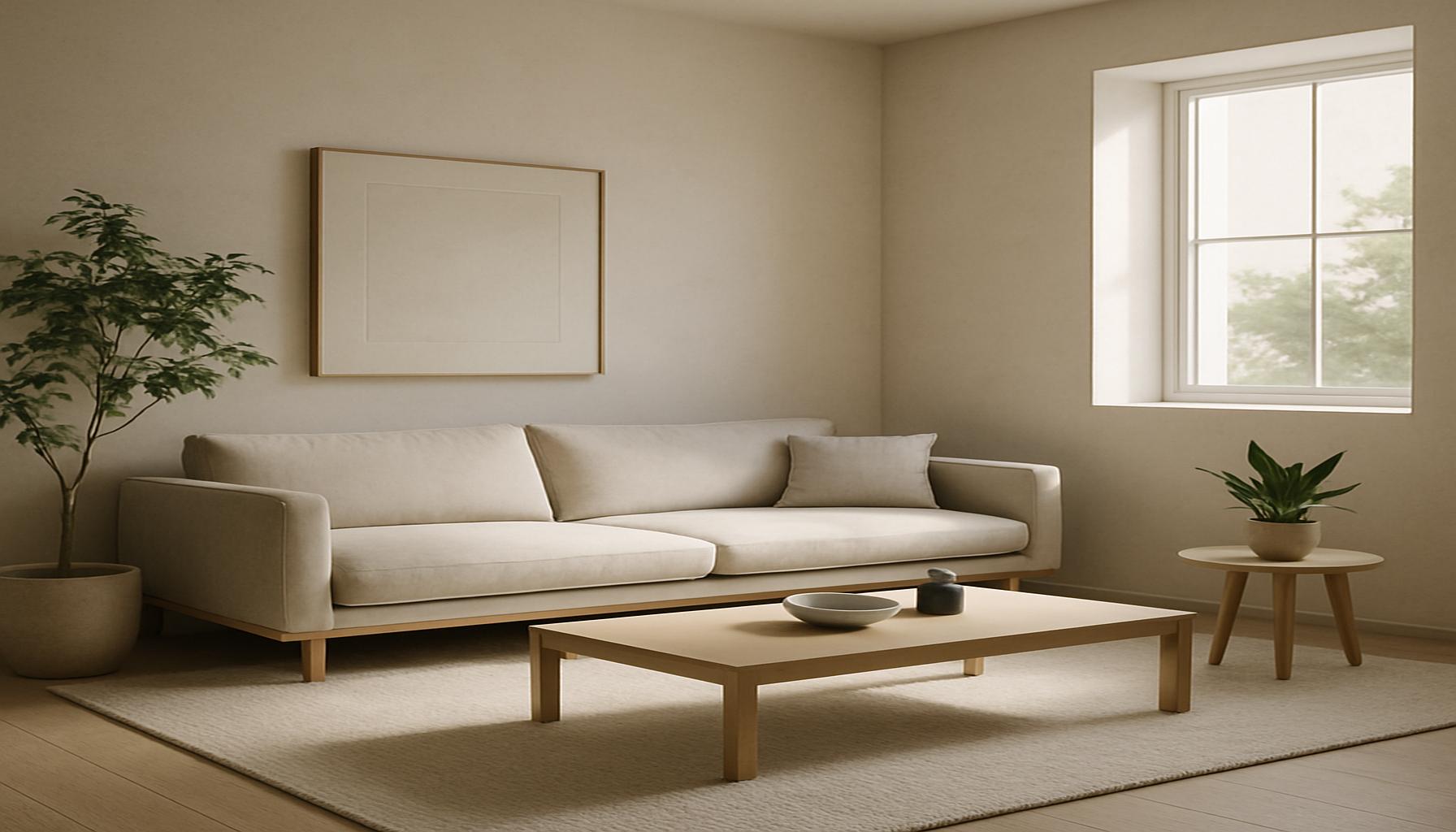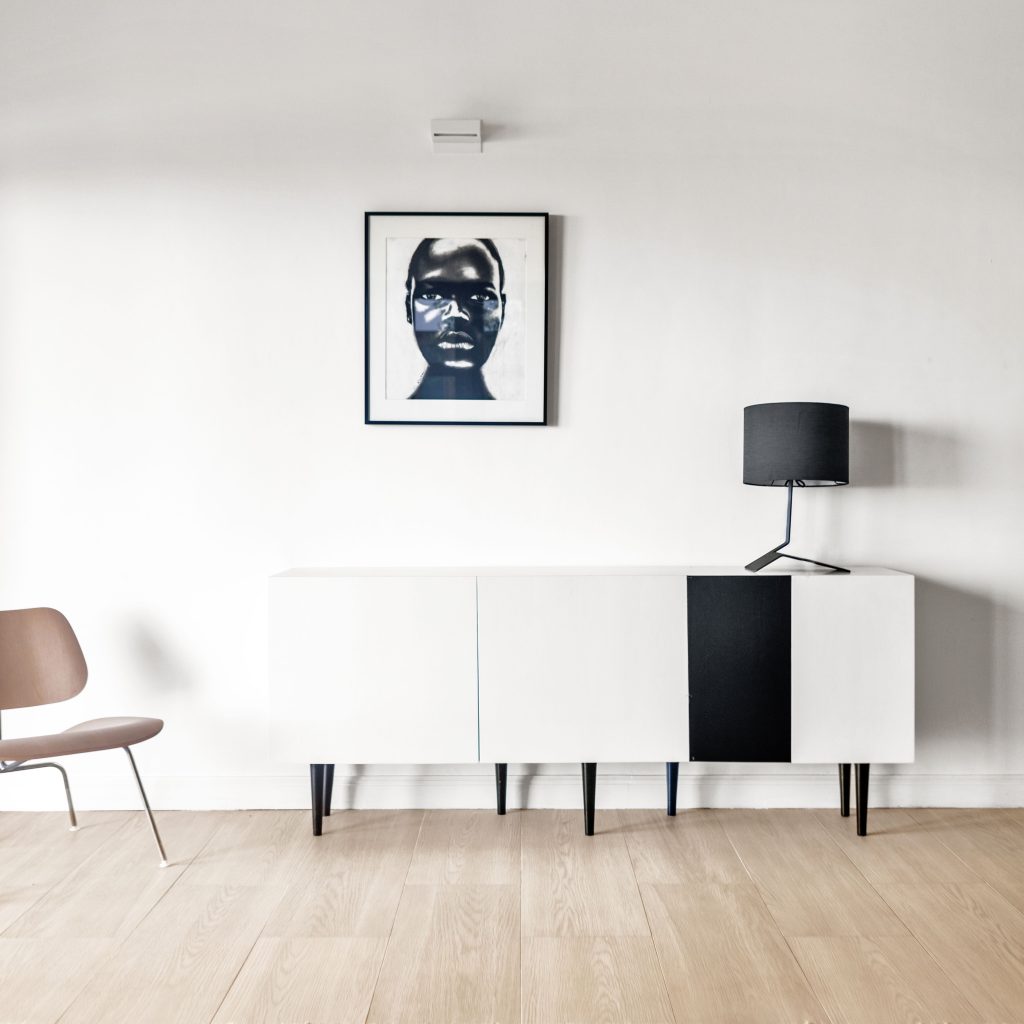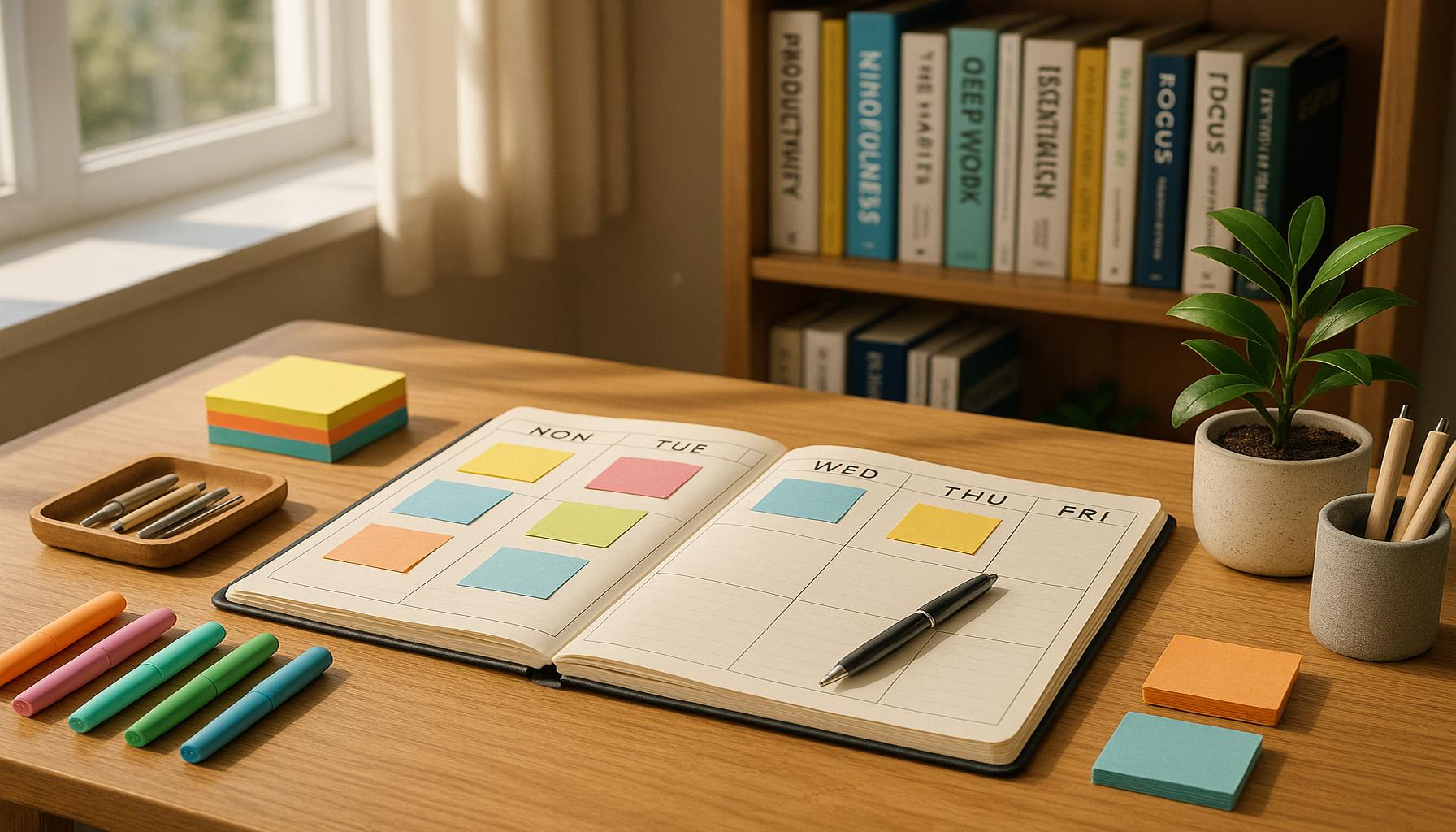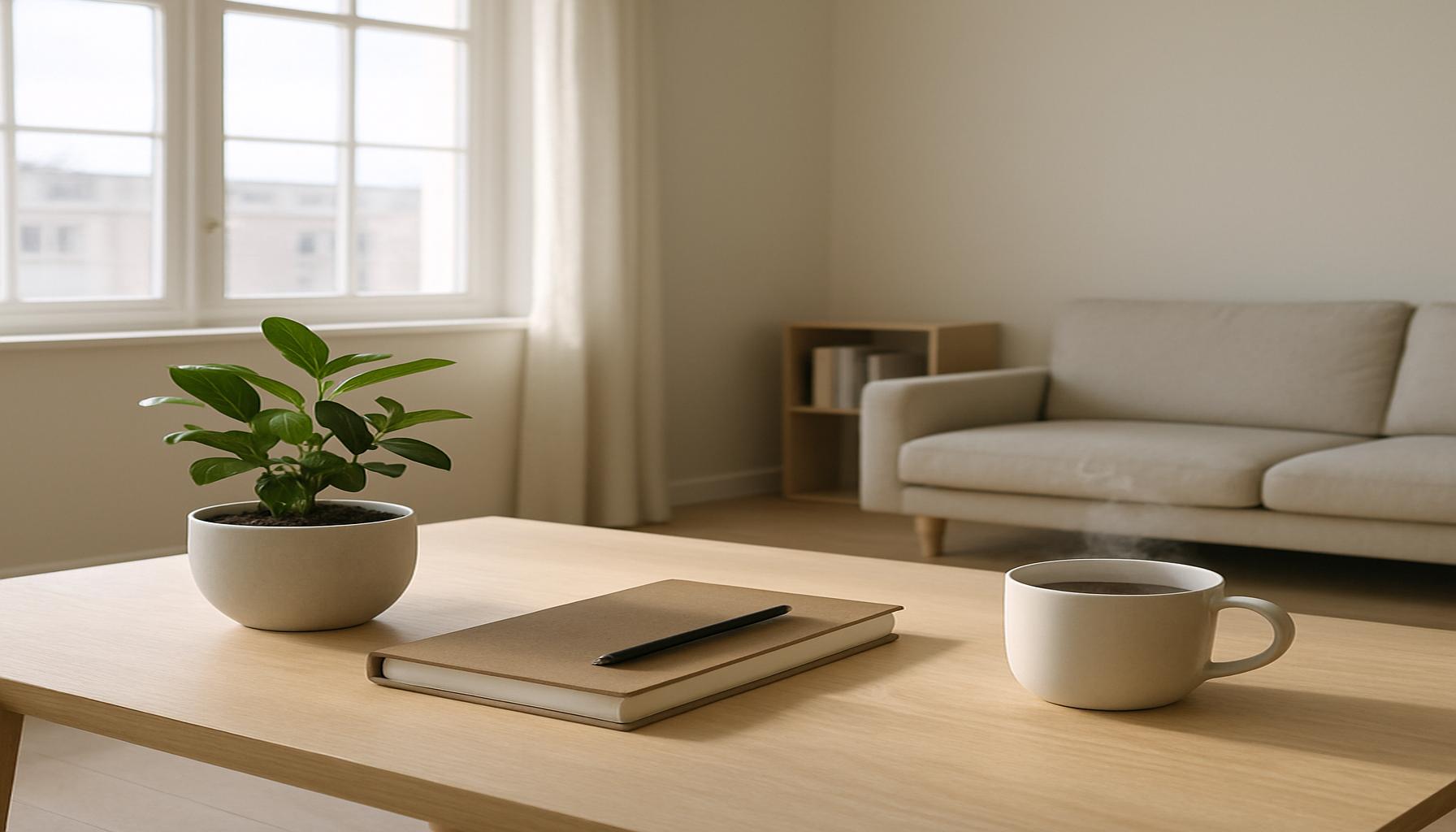The Importance of Intentionality in Creating Minimalist Home Spaces

Embracing Minimalism with Purpose
In a world overflowing with distractions and material possessions, the philosophy of minimalism encourages us to reassess what is truly important. Minimalism isn’t just about decluttering; it’s a mindset shift that highlights the value of intentionality in our living spaces. By fostering a deliberate approach to our environments, we can enhance our productivity and emotional well-being.
Understanding the significance of intention in design helps us create spaces that resonate with our personal values and needs. Minimalist living promotes not only aesthetic simplicity but also mental clarity and emotional balance. This balance can lead to a more fulfilling life, where every item and arrangement serves a distinct purpose.
To help you navigate the journey of building a minimalist home, we will explore the Top 5 Elements that embody intentionality in design. These components will guide you in crafting spaces that are not just visually appealing, but also enriching and functional.
Top 5: The Importance of Intentionality in Creating Minimalist Spaces at Home
Creating minimalist spaces at home has become much more than a fleeting design trend; it represents a transformative shift towards intentional living. This process goes beyond merely getting rid of excess items and operates on a deeper level, fundamentally impacting the way we think, feel, and live. It offers benefits such as enhancing peace, boosting productivity, and fostering a more profound connection with our environment. In this article, we will explore five pivotal ways to embrace minimalism through intentionality, ranked from least to most important.
5. Enhancing Aesthetic Appeal
The journey of embracing minimalism through intentionality often begins with a focus on aesthetic appeal. While it might seem surface-level, aesthetics play a crucial role in how comfortable and pleasant a space feels. By adopting an intentional strategy, you focus on curating your space with items that express your tastes and align with your personal ideals.

Consider this: a minimalist room furnished with a few well-chosen pieces can evoke a sense of harmony and calmness that is hard to achieve in a cluttered space. The beauty of carefully selected colors and textures lies in their ability to inspire creativity and tranquility—a combination that allows individuals to view their homes as art galleries reflecting personal style rather than sporadic collections of objects. This aesthetic cohesion creates an environment that is not only visually appealing but also emotionally soothing.
4. Promoting Mental Clarity
One of the most significant advantages of intentional living through minimalism is the improvement in mental clarity. In an age of constant distraction and overstimulation, creating a serene retreat to return to after a hectic day can be life-enhancing. This clarity is achieved by reducing visual noise, allowing individuals to focus solely on what is truly important to them.
- Deliberately designate spaces for specific activities—perhaps a corner for reading, an uncluttered desk for work, or a warm nook for personal reflection.
- Remove items that detract from the intended use of each area.
- Develop a consistent routine for cleaning and organizing that aligns with your lifestyle and goals.
By crafting spaces purposefully, you can elevate your home from a mere place of residence to a sanctuary that nurtures clear thinking and enhances productivity.
3. Encouraging Sustainable Living
Embracing minimalism with intentionality powerfully supports the cause of sustainable living. The principle of “less is more” encourages individuals to choose thoughtfully and responsibly, thus minimizing environmental impact. Intentional home design emphasizes the purchase of high-quality, sustainable items that will endure over time.
When making choices about furniture and decor, consider the environmental footprint. Seek out items made with eco-friendly materials, and invest in products that have a positive impact on both your life and the environment. Supporting local artisans or businesses that prioritize sustainability can also amplify the ecological benefits of your choices. By integrating sustainability into your home design, you are making a small yet powerful statement about your commitment to the environment.
2. Cultivating Mindfulness
The deliberate act of creating minimalist spaces is instrumental in fostering mindfulness. In taking a step back to observe and choose what belongs in your living space, you develop a heightened awareness of your interactions with your environment. This practice transcends visual aesthetics, influencing the emotional and mental landscapes of your home.
Designing intentional areas for activities such as reading or meditation encourages engagement in meaningful self-care practices. As you refine your home, you find yourself appreciating items that contribute to your sense of joy and calmness. This conscious lifestyle cultivates mindfulness and aligns your environment with your emotional and mental well-being. The house becomes more than a dwelling; it becomes an embodiment of your values, preferences, and aspirations.
1. Facilitating a Purpose-Driven Life
The pinnacle of intentional living through minimalism is the creation of a space that facilitates a purpose-driven life. Minimalism does not advocate having nothing but rather cherishing what serves a significant role in achieving one’s goals and dreams. By curating your home environment with purpose, you chart a course towards growth, clarity, and deeper connection with others.
Your home should function as an ally in your journey towards achieving your life objectives. Whether it’s a serene space for relaxation, a functional area to boost creativity, or an inviting room for family gatherings, intentional choices ensure that each part of your home aligns with your aspirations. This conscious alignment fosters an environment conducive to a fulfilling life rich in purpose and meaningful connections.
In conclusion, adopting a minimalist lifestyle enriched by intentionality allows you to transform your home into a haven of comfort and inspiration. By focusing on aesthetics, mental clarity, sustainability, mindfulness, and purpose, you can create an environment that not only satisfies the eye but nourishes the soul. As you clarify your intentions, your home begins to reflect your true self, offering you a path toward deeper personal fulfillment.
As we delve further into the importance of intentionality in creating minimalist spaces at home, it becomes paramount to evaluate the specific advantages that such a lifestyle brings. Minimalism extends beyond mere aesthetics; it resonates deeply with lifestyle choices that prioritize peace, clarity, and purpose. By understanding these key aspects, one can navigate the process of designing a home that truly reflects one’s values and aspirations.Firstly, incorporating intentionality leads to an **enhanced sense of peace** and tranquility within the home. When spaces are designed with deliberate choices, clutter diminishes, allowing for a more serene environment. This atmosphere aids in reducing stress and promotes mindfulness, as clean and open spaces are conducive to relaxation. For example, a reduced number of items in a living room can lead to less visual distraction, enabling one to enjoy moments of calm or engage more fully in activities such as reading or meditation.Furthermore, the process of curating a minimalist space encourages significant **self-discovery and clarity**. By reflecting on what items are truly necessary and meaningful, individuals begin to understand their personal values and priorities. This practice not only clears physical space but also brings mental clarity, helping one to focus on what truly matters. For instance, when deciding to keep only a few cherished books rather than an overflowing shelf, one may realize that they value quality over quantity, ultimately prompting more deliberate consumption habits and a more thoughtful approach to future purchases.Moreover, minimalism fosters **sustainability** and environmental awareness, as it often involves reducing consumption and promoting the use of items that are more durable and timeless. By investing in fewer, high-quality items, individuals contribute to a reduction in waste and resource depletion. Additionally, intentional choices in materials and furnishings can lead to an overall eco-friendlier home environment. For example, choosing sustainable furniture over mass-produced alternatives not only elevates the aesthetic appeal but also provides an opportunity to support environmentally responsible practices.Finally, there is a notable **increased functionality** within intentionally designed minimalist spaces. Each item within the home is selected for its utility and purpose, which facilitates a lifestyle that prioritizes practical living. For instance, a kitchen devoid of unnecessary gadgets allows for ease of movement and cooking, fostering an enjoyable cooking experience. This intentional arrangement often enhances one’s ability to be productive, as it minimizes distractions and promotes efficiency.In summary, the journey towards a minimalist home is one deeply embedded in the principles of intentionality. By understanding the multifaceted benefits, individuals can not only beautify their living spaces but also enrich their lives, fostering a deeper connection with their environment and a more profound sense of personal identity. As one reevaluates their home, it becomes an intricate tapestry woven from intention, mindfulness, and sustainable practices, leading to a fulfilling lifestyle that resonates with authenticity and purpose.
Frequently Asked Questions
What does it mean to be intentional when creating a minimalist space?
Being intentional in creating a minimalist space involves making deliberate choices about each item you bring into your home. It’s about considering the function and necessity of every piece of furniture, artwork, or decor before integrating it into your living environment. The focus is on enhancing utility and aesthetics while minimizing clutter, which helps to create a serene and functional space. This approach fosters a sense of calm and order, which can positively impact your mental well-being.
How can minimalism improve the quality of life at home?
Minimalism is often associated with an increase in lifestyle quality by reducing physical and mental clutter. In a home setting, a minimalist approach can lead to a more organized and efficient living space. This reduction in clutter can decrease stress and anxiety levels, as it limits distractions and allows for more focused and meaningful interactions with your environment. Additionally, less clutter means less to clean and maintain, freeing up time for other activities and enhancing overall life satisfaction.
Is it expensive to adopt a minimalist lifestyle?
Contrary to popular belief, embodying minimalism does not necessarily entail high costs. While initially investing in quality, versatile, and durable items might seem costly, this investment pays off in longevity and functionality over time. Minimalism encourages buying better, not more. The emphasis is on quality over quantity, leading to reduced long-term expenditure and waste. Furthermore, by re-evaluating the need for constant purchasing, you might find that consuming less ultimately saves money.
Can minimalism be personalized and still remain minimal?
Absolutely. Personalization is integral to minimalism, as it ensures that the space reflects the individual’s unique tastes and lifestyle. The key is to personalize intentionally. This means incorporating items that not only serve a purpose but also resonate with your personal experiences or aesthetic preferences. A minimalist space can be warm and inviting by carefully selecting meaningful items that bring you joy while maintaining a clean, streamlined look. Personalization within minimalism is about selective curation, which adds depth and personal touch without clutter.
Conclusion
In the pursuit of minimalist living, the concept of intentionality plays an indispensable role. As our article explored, intentionality is the cornerstone of creating spaces that are both serene and functional. By consciously curating our environments, we can better align our physical surroundings with our mental well-being.
One of the main takeaways is the impact of intentional decluttering. This process not only reduces unnecessary accumulation but also fosters a sense of clarity and focus. When each item in our homes serves a purpose or holds significant value, we cultivate an atmosphere that prioritizes quality over quantity.
Moreover, our discussion highlighted the importance of designing spaces that reflect personal goals. A minimalist space isn’t defined by its lack of objects but rather by its utility and how it caters to the inhabitants’ needs. By being intentional, homeowners can transform their environments into reflections of their aspirations and lifestyle choices.
The article also delved into the role of mindfulness in maintaining a minimalist home. Regularly assessing and revisiting our spaces ensures they continue to support and enhance our day-to-day lives. This continuous engagement with our living environments encourages growth and change, something that is integral to personal development and self-discovery.
In conclusion, embracing intentionality within minimalist design extends beyond aesthetic appeal; it’s a strategic approach to cultivate order and purpose in everyday life. As more individuals seek simplicity and clarity, the value of intentionality in minimalist living remains a central theme worthy of exploration and adoption. As you embark on or continue your minimalist journey, remember that every choice counts. This mindful attention to detail will ultimately create a more meaningful and peaceful living experience.


